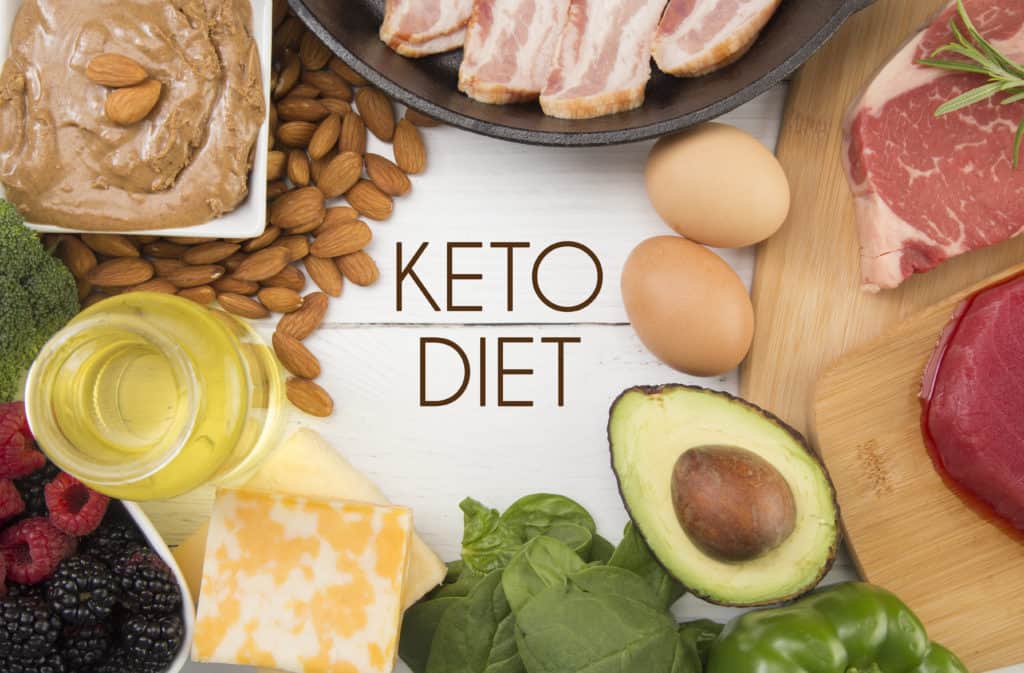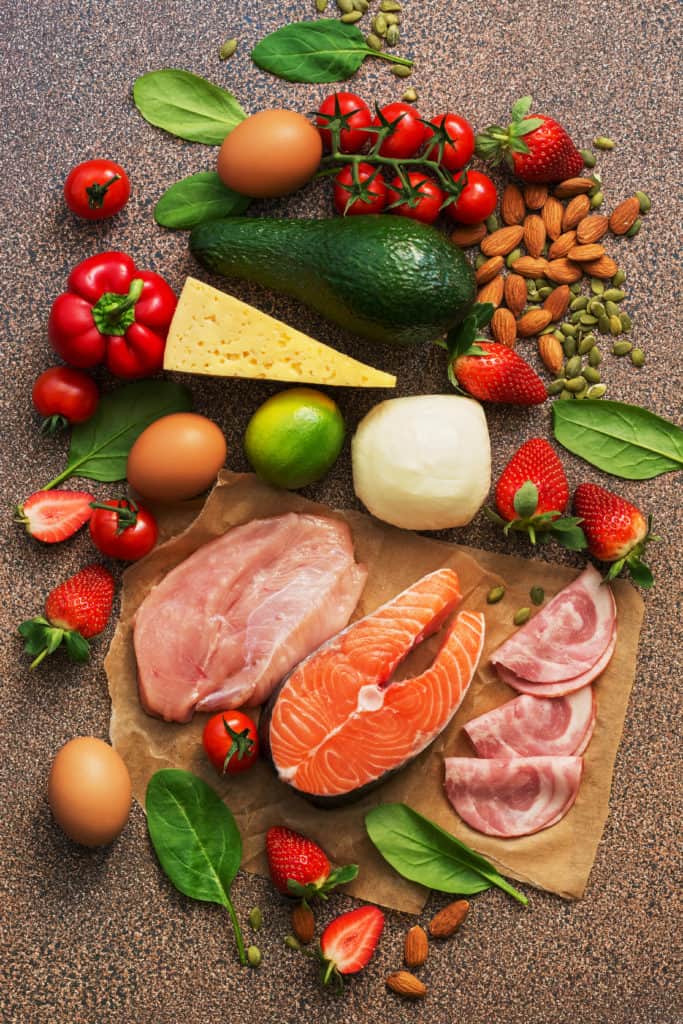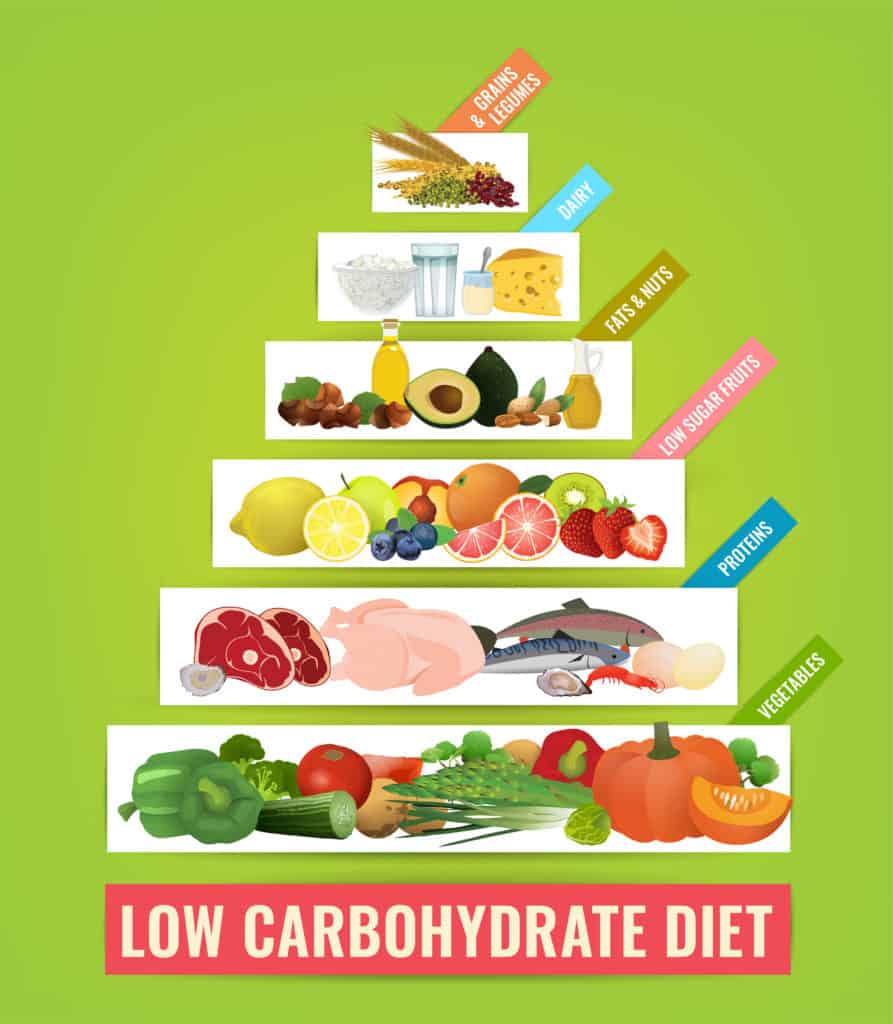Starting a keto diet can be daunting. There are so many misconceptions, questions, and worries about what to eat and how to get started. As a result, it’s often hard for people to take the first step. So, we’ve created this guide to discuss what a keto diet is, why it’s important for those living with diabetes or epilepsy, and finally, we’ll cover the basics so that you can get started as soon as possible.
Different Types of Ketogenic Diets
There are several types of the ketogenic diet, including:
- Standard Ketogenic Diet (SKD): This is the most common type of keto diet, where you eat a standard ratio of 75% fat, 20% protein, and only about five to ten percent carbs. Those on this diet can expect that they will be in ketosis for three to four hours after eating their first meal as long as it’s high enough in fats.
- Cyclical Ketogenic Diet (CKD): This is a variation of the SKD that may be best for people who cannot stick to a low-carb diet. This type of ketogenic diet can often fluctuate between periods where you eat more carbs and then have longer periods where you don’t eat any carbohydrates at all.
- Targeted Ketogenic Diet (TKD): This is another version of the standard keto diet, but it allows for some carbohydrate intake around workout sessions. For example, someone on this particular calorie restriction might only consume 20% protein with 80% fat during their workouts to allow maximum output without compromising muscle mass or strength levels.
High Protein Keto Diet: Similar to a standard keto diet, a high protein keto diet works by restricting your carb intake while increasing your protein intake. The keto diet is a popular weight loss and lifestyle choice, but it can also help with athletic performance. The ratio is often 60% fat, 35% protein, and 5% carbs.

Health Benefits of a Keto Diet
What started as a tool for treating neurological diseases such as epilepsy quickly grew into a mainstream movement with numerous health benefits, including:
- Weight Loss: One of the most common reasons people turn to a keto diet is weight loss. The low carb, high fat plan leads you into what’s known as nutritional ketosis–when your body burns fats rather than sugars and carbs for fuel.
- Mental Clarity: The ketogenic diet benefits people through improved cognitive function due to increased beta-hydroxybutyrate levels in the brain, which can lead to improvements in focus or memory. This also helps with symptoms related to epilepsy and Alzheimer’s disease – two very serious neurological disorders that affect many Americans today.
- Heart Health: A ketogenic diet can help improve risk factors such as body fat, HDL (good) cholesterol levels, blood pressure, and blood sugar, which can lead to a lower chance of developing heart disease.
- Blood Sugar Control: Research has also shown that the keto diet is as effective, if not more so, at helping control type II diabetes than other diets high in carbs or sugars.
Foods To Eat
A keto diet menu around these foods:
- Meat: red meat, steak, ham, sausage, bacon, chicken, and turkey
- Fatty Fish: salmon, trout, tuna, and mackerel
- Eggs: omega-3 whole eggs (or pastured)
- Butter and Cream: grass-fed butter and heavy cream
- Cheese: unprocessed cheeses like cheddar, goat, cream, blue, or mozzarella
- Nuts and Seeds: almonds, walnuts, flaxseeds, pumpkin seeds, chia seeds, etc.

Foods to avoid
Foods that are high in carbs should be consumed in moderation. Here’s a list of foods that need to be limited or eliminated on a keto diet:
- Sugary Foods: soda, fruit juice, smoothies, cake, ice cream, candy, etc.
- Fruit: all fruit, except small portions of berries like strawberries
- Grains or Starches: wheat-based products, rice, pasta, cereal, etc.
- Beans or Legumes: peas, kidney beans, lentils, chickpeas, etc.
- Root Vegetables and Tubers: potatoes, sweet potatoes, carrots, parsnips, etc.
- Low-Fat or Diet Products: low-fat mayonnaise, salad dressings, and condiments
- Some Condiments or Sauces: barbecue sauce, honey mustard, teriyaki sauce, ketchup, etc.
- Unhealthy Fats: processed vegetable oils, mayonnaise, etc.
- Alcohol: beer, wine, liquor, mixed drinks
- Sugar-Free Diet Foods: sugar-free candies, syrups, puddings, sweeteners, desserts, etc.
Side Effects of Committing to a Keto Diet
Although ketogenic diets are considered safe for most healthy people, there may be some initial side effects, but these are usually short-term and should go away after the body gets used to the new diet! Although a keto diet is considered safe for most healthy people, there may be some initial side effects such as fatigue, headaches, vomiting, and constipation.
The infamous keto flu is an assemblage of symptoms that may develop two to five days after starting a ketogenic diet. Headache, foggy brain, tiredness, irritability, queasiness, trouble sleeping, and costiveness are just some of the symptoms of this side effect.
Other less common symptoms include:
- Low energy and mental function
- Sustained hunger
- Difficulty sleeping
- Nausea
- Digestive discomfort
- Decreased exercise performance
To minimize these initial side effects, you can try a regular low-carb diet for the first few weeks. This will help teach your body to burn fat before completely eliminating the carbs. A ketogenic diet can also alter your body’s water and mineral equilibrium, so supplementing extra salt to your meals or adding mineral supplements to your diet may help.
More Keto tips and tricks
- Start by paying attention to food labels and checking the contents to determine how your favorite meals can fit into your new diet.
- Planning out your meals in advance can be beneficial in helping you stay on track with your progress.

- Look for keto recipes online. Many websites, apps, and cookbooks offer keto-friendly recipes and meal ideas to try at home.
- Subscribe to a meal delivery service. Some offer keto-friendly options for a fast and convenient way to enjoy keto meals at home.
- Keep hydrated. Be sure to drink plenty of water throughout the day and add extra salt or bouillon cubes if you like a salty taste. Ketogenic diets are more easily maintained when drinks with artificial sweeteners are avoided, as they can cause blood sugar levels to rise sharply
Takeaway
A ketogenic diet can be life-changing for overweight people suffering from diabetes and those looking to improve their metabolic health. On the other hand, it may not be suitable for some people’s lifestyles and preferences. Now that you know a thing or two about keto, speak with your physician about your health goals to determine if a keto diet is right for you.
